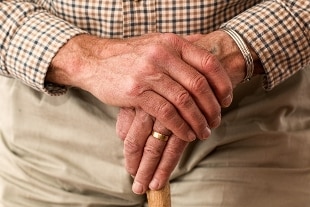- Parkinson's: in Italy 250,000 patients and the number is growing every year. But the research promises well
- Parkinson's, neuromodulators but also surgical therapy
- Stroke, SLA, Parkinson's, Alzheimer's. Few funds for therapeutic novelties
- Stem cells unknown to Italians
Share
30 August 2017 A new anti Parkinson therapy based on reprogrammed stem cell neurons, the so-called induced pluripotent stem cells (iPs) that yielded the Nobel Prize in 2012 to the Japanese Shinya Yamanaka and to the Englishman John Gurdon was closer. Monkeys with symptoms of neurodegenerative disease show "significant benefits" more than 2 years after transplanting with human iPs, opening up the use of treatment on patients.The results of the study are published in 'Nature' by scientists from the Center for iPs Cell Research and Application (Cira) of the Kyoto Kyoto University, who intend to launch the first human tests before the end of 2018. One of the last steps that precede the clinical testing of a new brain cell therapy in fact provides for a research on primates, to verify its safety and its possible efficacy. Pass successfully passed now.
Parkinson's target cells, the authors recall, are the neurons that produce the dopamine neurotransmitter. Numerous previous studies have shown that the transplantation of dopaminergic neurons (Da) obtained from fetal cells is able to alleviate the symptoms of the disease. However, the use of fetal tissue is controversial, while iPs can be obtained from blood or skin: adult cells 'rejuvenated' at the stage of 'babies', reprogrammed so as to return to a condition of pluripotency, ie capable of giving rise to to any cell in the body. "Our data suggest that Da neurons derived from iPs work just as well as those obtained from fetal brain tissue," says neurosurgeon Jun Takahashi, head of the Japanese laboratory.
In another research on monkeys published in 'Nature Communications', the same team found that, for cell therapy to have more hope for success, donor and recipient must have a corresponding Hla immune profile (human leukocyte antigen system, Mhc in the primates). In this way, even if it is not possible to avoid an immunosuppressive therapy to avoid the danger of rejection, the treatment can be administered at lower doses with a lower risk of infections.

